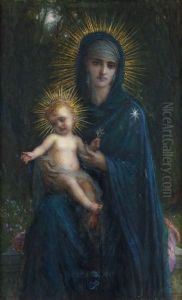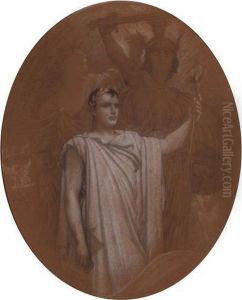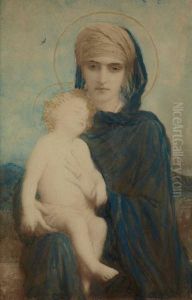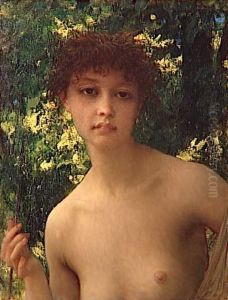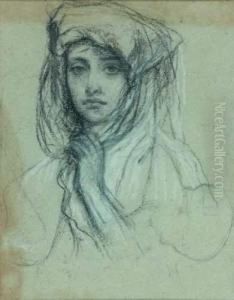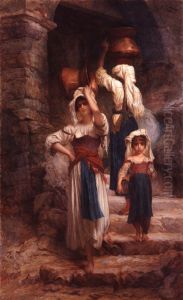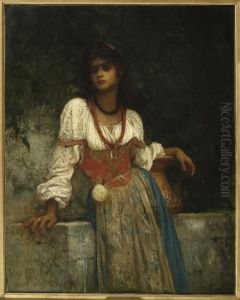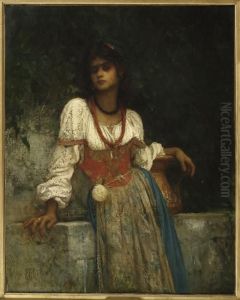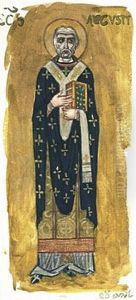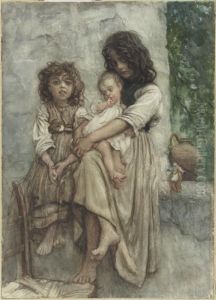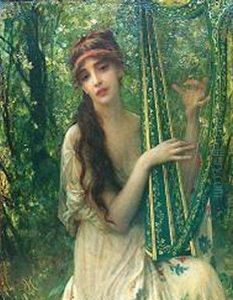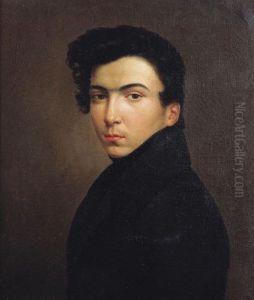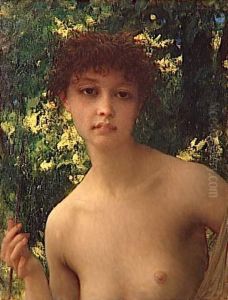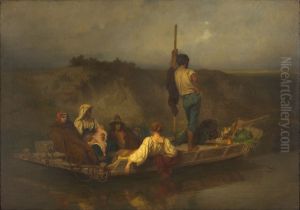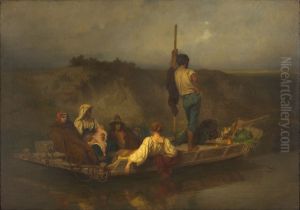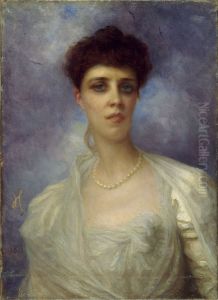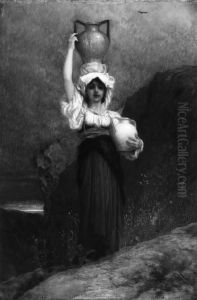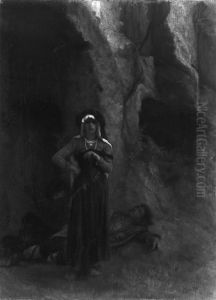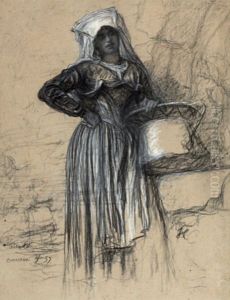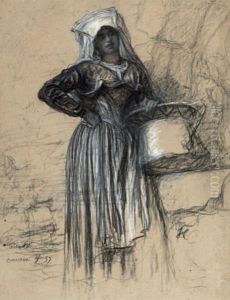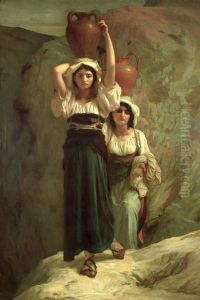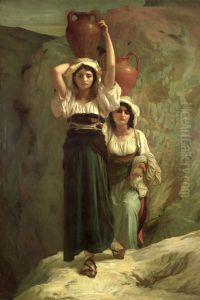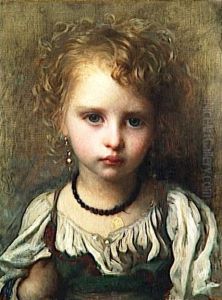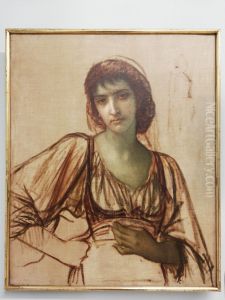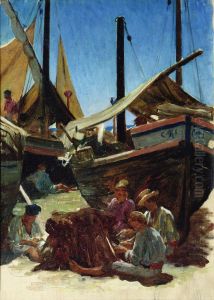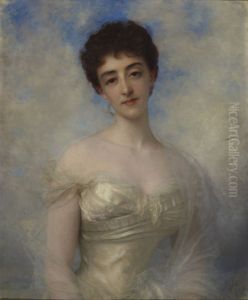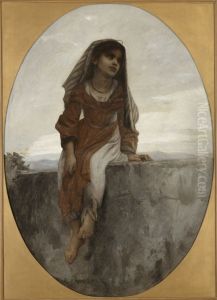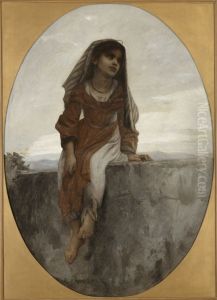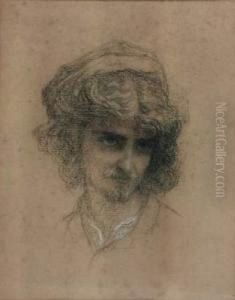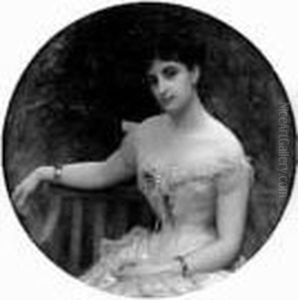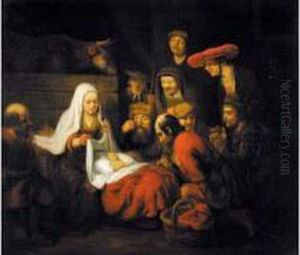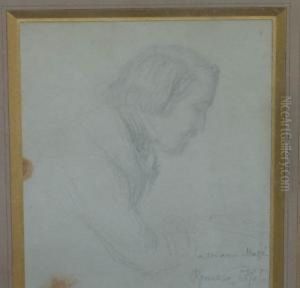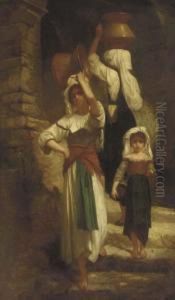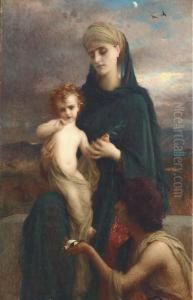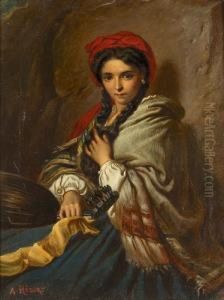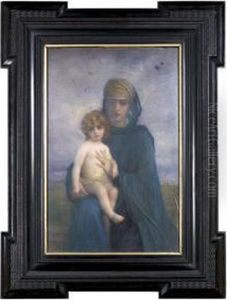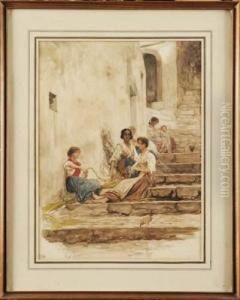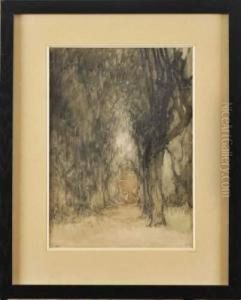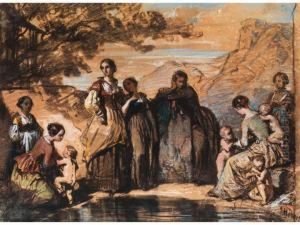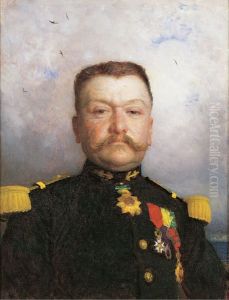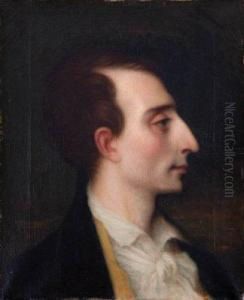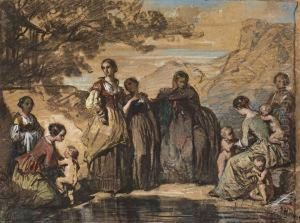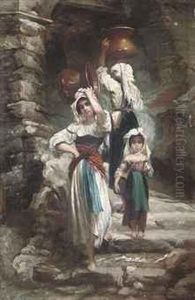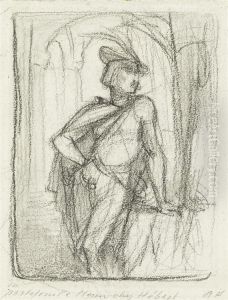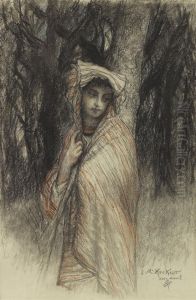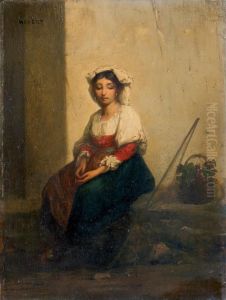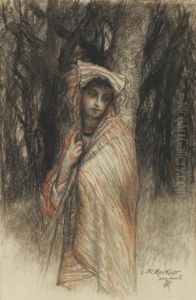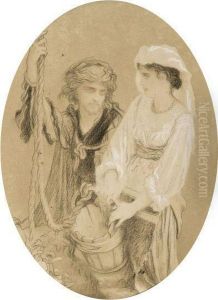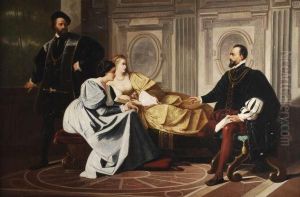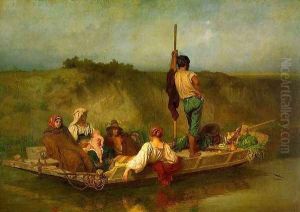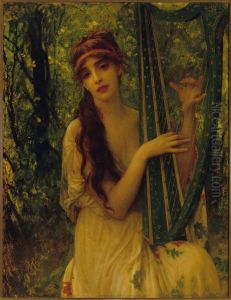Ernest Hebert Paintings
Antoine Auguste Ernest Hébert was a French painter and academician born on November 3, 1817, in Grenoble, France. He was known primarily for his portraits and allegorical paintings imbued with a sense of romanticism, which was characteristic of the mid-19th century. His work often reflected the influence of the Italian Renaissance, which he admired during his time in Italy.
Hébert's artistic journey began at a young age under the guidance of his mother, who was a talented painter. He later studied at the École des Beaux-Arts in Paris and won the prestigious Prix de Rome in 1839, which allowed him to study at the French Academy in Rome, located in the Villa Medici. His stay in Italy, which lasted until 1844, had a profound impact on his style, as he developed a fascination with Italian art, particularly the works of the early Renaissance and the Quattrocento period.
After returning to France, Hébert enjoyed a successful career and received numerous commissions. Some of his notable works include 'La Malaria' and 'Les Gracques', which showcase his ability to convey complex emotions and narratives through his paintings. He also created portraits of several prominent figures of his time, which were highly regarded for their elegance and psychological depth.
In addition to his painting career, Hébert served as the director of the French Academy in Rome from 1867 to 1873 and again from 1874 to 1879. His tenure was marked by a commitment to nurturing the talents of young artists and maintaining the classical traditions of French art. Hébert's influence extended beyond his own work, as he played an important role in shaping the artistic education of the period.
Hébert's later years were marked by a decline in popularity as the art world's interests shifted towards Impressionism and other modern movements. Despite this, he continued to paint and exhibit his work. He was also involved in the decoration of several public buildings in Paris.
Ernest Hébert passed away on December 4, 1908, in La Tronche, near Grenoble. Although his name may not be as widely recognized today as some of his contemporaries, his contributions to 19th-century French painting and his role as an educator have secured him a place in the annals of art history. His works are preserved in many museums across France, including the Musée Hébert in Paris and La Tronche, which honor his legacy.
